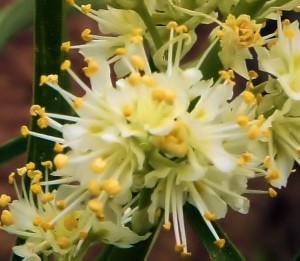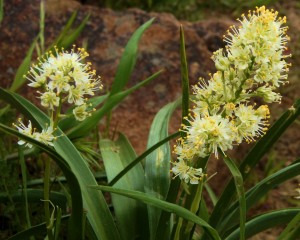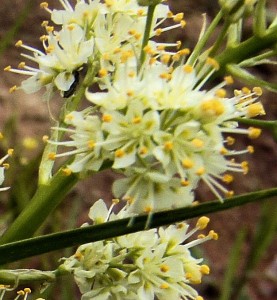
The Foothill Death Camas (Toxicoscordion paniculatum (Nutt.) Rydb. is native to the Western USA from Washington and Montana on the north to California and New Mexico on the south. In Washington, it is found in most counties between the Cascade Crest and the Idaho border. It grows in a wide variety of habitats ranging from the sagebrush deserts to Ponderosa Pine forests to mid-elevation mountain tops.

The plants are between 12 to 30 inches high arising from a dark brown to black coated bulb. The flowers are cream-white in color and are arranged in a fairly open panicle (or branched cluster) consisting of up to 80 flowers per cluster. The flowers at the tip of the stem are bisexual, while the ones lower on the stem are generally male (staminate) or sterile. The three outer petals are shorter than the three inner petals. The leaves are 8 to 20 inches long and about 1/2 inches wide.
The Foothill Death Camas can be poisonous to grazing livestock; fortunately, they tend to avoid eating it because the leaves are unpalatable. The bulbs of the Foothill Death Camas, which are similar in appearance to the edible Blue Camas, are known to be poisonous to humans.
The scientific names Zigadenus paniculatus (Nutt.) S. Watson and Helonias paniculatus Nutt. for this species can be found in historic literature.




